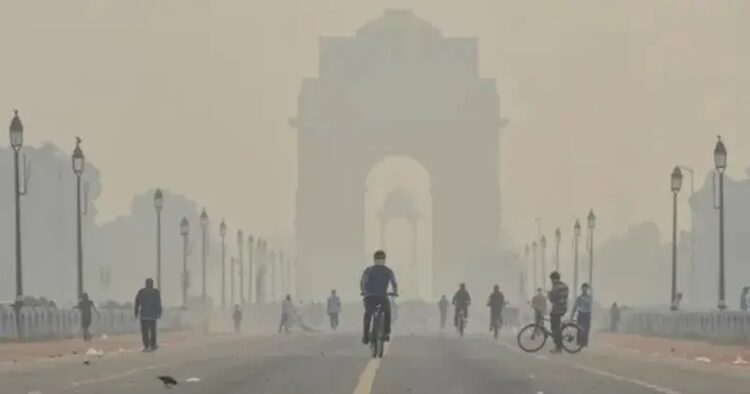The increasing air pollution levels in the national capital and its adjoining areas, including Noida, Gurugram, Ghaziabad and Faridabad, residents continue to struggle with the thick toxic smog, leading authorities to take strict measure to combat the health emergency.
According to the Central Pollution Control Board (CPCB), air quality in the city breached the “severe” category with Anand Vihar registering the AQI at 441 on Friday. The air quality in the city remained in the “severe” category for the third consecutive day on Friday. The city’s 24-hour Air Quality Index (AQI), recorded at 4pm every day, was recorded at 424, up from 418 on Wednesday. On Friday, a thick layer of smog enveloped the city, reducing visibility and disrupting traffic.
Out of Delhi’s 39 monitoring stations, 27 loged air quality in the “severe” zone. These stations include Anand Vihar, Ashok Vihar, Aya Nagar, Bawana, Dwarka Sector 8, IGI Airport, ITO, Jahangirpuri, Mandir Marg, Mundka, Najafgarh, Narela, Nehru Nagar, North Campus, Patparganj and Punjabi Bagh.
The Delhi government has ordered the school in the city to shift to online learning mode to ensure safety for school children. According to the order, physical classes for primary schools will not be conducted until further orders, but online classes can continue.
The increasing air pollution level also triggered the implementation of third stage of the Graded Response Action Plan (GRAP). The restrictions came into force at 8am on Friday. Notably, GRAP is a set of emergency measures to combat air pollution in the Delhi-NCR region. The measure is brought into practice by the commission for Air Quality Management (CAQM) when the Air Quality Index (AQI) surpasses a certain level, leading to a health emergency. The GRAP for Delhi-NCR is divided into four stages of air quality — Stage 1 for “poor” Air Quality Index (AQI) ranging between 201 and 300, Stage 2 for “very poor” AQI of 301-400, Stage 3 for “severe” AQI of 401-450 and Stage 4 for “severe plus” AQI (more than 450).

















Comments